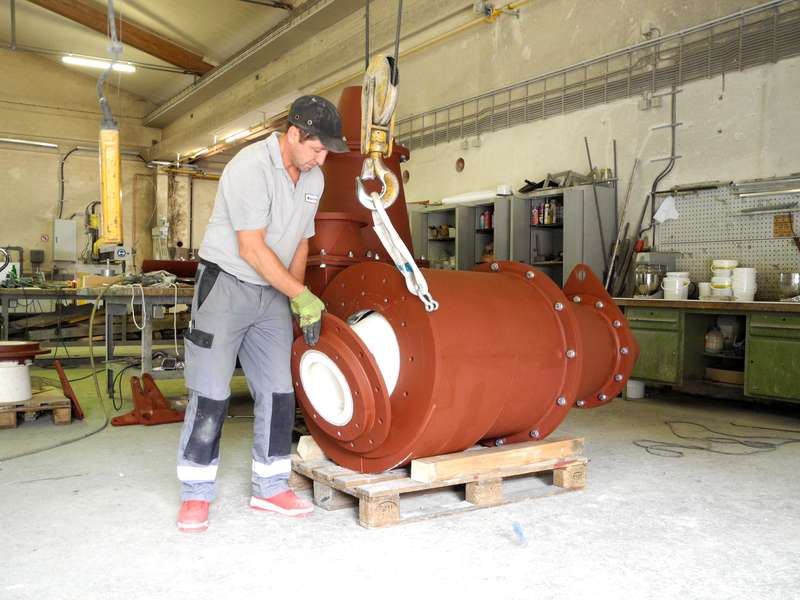A dense media cyclone separates magnetite and other minerals from the coal, which results in higher-quality coal and thus improves the efficiency of pig iron production. On average, 60 tonnes of coal with grain sizes from 0.5 to 13 mm pass through the cyclone in an hour. This equates to a speed of 3 m per second. Due to the high throughput of material and the density of material impacting on the cyclone walls, there is a high degree of wear on them.
Until now, the cyclone in question has been lined with aluminium oxide tiles. The design has proven inadequate, however, so that the tiles got damaged within a matter of days. Because of this bad experience, the steel maker has been seeking out a new kind of lining with fewer joints or transitions. This was also intended to enhance the efficiency of the cyclone by improving the flow of material within the cyclone itself.
Our engineers came up with a suitable solution: They constructed a steel cyclone with improved internal geometry. To increase the efficiency of the cyclone, they fashioned the lining to precisely match this geometry. This involved using panels and shaped components made of the wear protection compound KALCOR S. This is comprised of both aluminium oxide and zirconium oxide raw material, moulded to form panels and components of the right shape and then sintered. KALCOR S cones with a radius of some 600 mm have been fitted into the conical cross section of the cyclone. Thanks to its high resistance to abrasive wear and temperature resistance to as high as 1,250°C, KALCOR S will extend the lifetime of the cyclone many times over. In conjunction with optimised overall design, it will also considerably enhance the productivity of the dense media cyclone. Commissioning of the plant at the customer’s site will be carried out in the near future.
